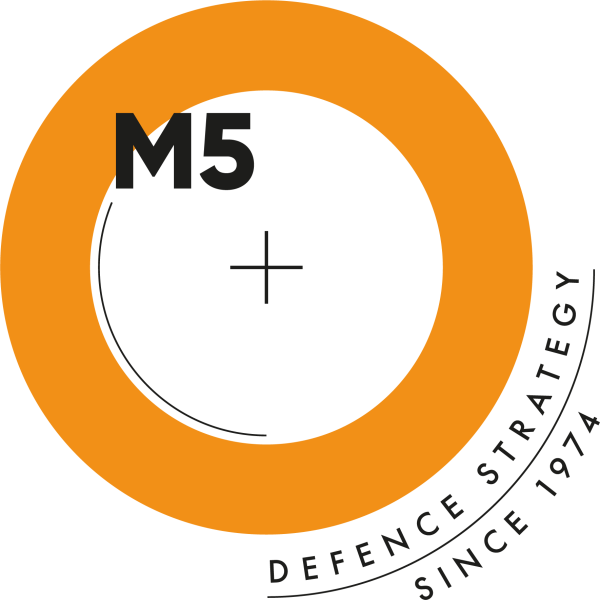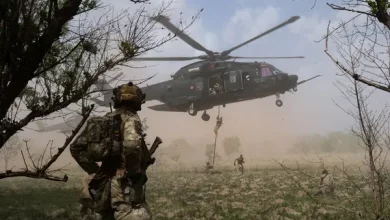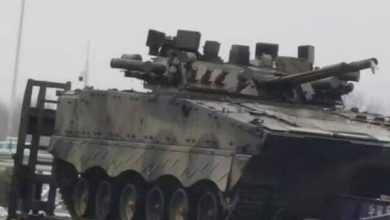U.S. Army Report: How China Fights in Large-Scale Combat Operations

The report “How China Fights in Large-Scale Combat Operations” contains a detailed assessment of China’s military strategy, operational concepts, and the expected characteristics of the People’s Liberation Army Ground Forces (PLAGF), conducted by the U.S. Army Training and Doctrine Command. We will try to provide a brief summary of this report. You can find the original version in our Library.
Geopolitical Context
The Chinese leadership perceives the global security environment as increasingly complex and perilous, identifying the United States as its principal strategic competitor.
Although not explicitly defined, China’s primary interests center on economic development, domestic stability, national sovereignty, and territorial integrity.
In order to safeguard these key interests, China has expanded the scope of its focus to include overseas interests. This expansion was documented in China’s 2013 Defense White Paper and is reflected in its efforts to establish global military influence.
China’s interpretation of its territorial sovereignty is quite broad and has resulted in territorial disputes with 17 countries. Among these, Taiwan and its disputed status are of particular concern to the Communist Party of China. Chinese leaders reject foreign interference in the Taiwan issue, democracy, and human rights, prioritizing their ambition to establish China as a global economic and geopolitical power.
Overall Military Strategy
China’s approach to conflict varies from diplomatic engagement to full-scale warfare employing all available means to gain advantage. This comprehensive national approach encompasses a wide range of activities, including the work of China’s United Front — a combination of influence operations, interference, and intelligence activities — and the “three warfares” (psychological, informational, and legal), which are applied to advance national interests without direct armed conflict, as well as the military concept of “active defense.”
The concept of active defense establishes the foundation of China’s military strategy and involves a strategically defensive posture with the capability to conduct offensive operations both at the operational and tactical levels. This enables China to fully leverage three factors: numerical strength, large reserves of military equipment, and internal communications.
Additionally, the scope of active defense has expanded over the past 15 years, shifting from a purely defensive stance to one capable of projecting power beyond China’s immediate borders. This evolution includes developing antiaccess capabilities, emphasizing maritime military struggle, and preparing for ‘informationized’ and ‘intelligentized’ warfare. The strategy integrates the concept of ‘Modern People’s War,’ which the CCP defines as the mass mobilization of society to confront foreign aggression or protect national unity.
A key tenet of China’s active defense strategy is ‘war control’ or ‘effective control,’ that is, how China manages activities during competition, crisis, and conflict. War control emphasizes the management and containment of conflicts to achieve specific objectives while minimizing risks.
It can be understood as having three main components:
- Establishing position uses nonviolent means during peacetime/competition to address potential weaknesses and maintain stability.
- Crisis prevention and control employs all national instruments of power and whole-of-nation capabilities to prevent escalation while seizing opportunities to advance interests.
- War situation control seeks quick victory at minimal cost while containing escalation in intensity and scope.
Military-Civil Fusion
China views ‘military-civil fusion,’ the concept of a national integrated strategic system and capabilities, as a critical enabler in strategic competition and conflict. Chinese military power integrates and depends upon whole-of-nation support for rapid deployment and protracted sustainment.
In 2015, Xi introduced the concept of military-civil fusion, which is a further refinement of CCP concepts of civilian support to the military. In 2017, the CCP established the Central Commission for Integrated Military and Civilian Development to oversee its integration. Later renamed the “national integrated strategic system and capabilities,” this system was adopted to help China make optimal use of its significant civilian economic power, science and technology sector, and civilian infrastructure to support military development and, symbiotically, to use military research, development, and capabilities for social benefit.
China has developed initiatives across all segments of society in the frameworks of military-civil fusion, which have important implications for its strategic and operational capabilities. Examples of this can be seen across all segments of society:
- China’s 2016 Defense Transportation Law dictates state-owned enterprises build and train to support defense efforts, and it broadens the state’s authorities to requisition vehicles, facilities, and materials during wartime.17 The PLA regularly carries out large-scale exercises involving civilian transports, logistics facilities, and municipalities.
- As the war in Ukraine has highlighted, the resilience of a country’s economy is crucial for maintaining its ability to conduct military operations. This resilience includes the capacity to sustain economic activity during conflict, mitigate the impact of disrupted supply chains, avoid sanctions, and restore logistical hubs and other centers after they have been damaged. China has made significant efforts in this regard: it has created its own payment system in addition to the SWIFT banking system, improved its energy and food independence, and established a strategic oil reserve.
- The Chinese Communist Party (CCP) has numerous civilian bureaus and agencies responsible for conducting influence operations, which are increasingly supported by a broad ecosystem of private companies carrying out cyberattacks and information operations in the online space.
Systems Confrontation
China conceptualizes modern warfare against the United States and its allies as a ‘systems confrontation’ rather than traditional force-on-force or platform-on-platform battles. By Chinese idea, “systems confrontation” is the act of pitting opposing states’ defense strategies, systems, and civil-military synergy against each other.
China believes that targeting and disrupting its enemy’s interconnected systems can neutralize the enemy’s ability to function effectively, project power, and wage war.
In 2021, to enable China’s systems approach, the PLA adopted Multidomain Precision Warfare (MDPW) as its core operational concept. This concept enables systems confrontation and supports the integration of operations across all domains.
It is based on the new domains identified in Chinese military writings, which elevated the cognitive dimension and electromagnetic spectrum to be coequal with the more established land, sea, air, space, and cyber domains.
MDPW aims to fuse information across services and domains to launch strikes against identified enemy vulnerabilities.
Future conflicts involving the PLA under the MDPW operational concept will likely feature the following key characteristics:
- Joint Multidomain Integration. China recognizes the importance of joint operations supported by interagency and whole-of-nation power and thus will fight as a joint force, working to integrate efforts across all domains.
- Systems Confrontation. China will execute systems confrontation by leveraging integrated joint operations, networked capabilities, and advanced weapons systems across all domains, resulting in a ‘compressed battlespace’ within an ‘expanded warspace.’
- Information Dominance. For China, information dominance is essential in modern warfare. China will attempt to influence the cognitive domain with a information dominance campaign that uses psychological operations and cyber warfare to sway an adversary’s decisionmakers and mold behavior.
- Intelligentized Warfare. Intelligentized warfare uses advanced technologies and innovations such as artificial intelligence (AI), quantum computing, robotics, big data analytics, and hypersonic systems to improve decisionmaking.
- Winning Small Battles for Total Victory. China prefers small battles with superiority of mass at key times and places, leading to overall victory. At the tactical level, Chinese Academy of Military Science scholars emphasize the aggregation of lower quality forces to overcome a superior enemy, and that winning small battles will lead to total victory.
- Protracted Conflict. China desires quick victories but recognizes and is prepared for the possibility of protracted conflict.
The People’s Liberation Army
Historically, PLA operations have relied heavily on the PLA Army, its ground force. The PLA Army is large, comprising approximately 51% of the PLA’s active-duty force. However, the rapid growth and modernization of China’s other services, including the PLA Navy, PLA Air Force, and PLA Rocket Force, have significantly enhanced China’s joint combat power. The PLA Navy is further augmented by China’s coast guard which operate more than 1,200 vessels.
China has made significant investments in space capabilities over several decades, developing a robust and multifaceted space program. The PLA uses space assets for various purposes, including intelligence collection, communications, and navigation support. Additionally, the PLA has developed and employs counterspace capabilities to disrupt space-based communications, radar, and navigation systems – all vital for military operations.
In the cyber domain, Chinese state-affiliated groups conduct large-scale and sophisticated cyber espionage campaigns against the United States and its allies.
The branches of the armed forces generate combat power and are supported by other elements — the Cyberspace Forces, Information Support Forces, Military Aerospace Forces, and the Joint Logistics Support Forces.
Joint Theater Commands
China has established five joint theater commands, each operating in a separate strategic region:
- The Eastern Theater Command covers the densely populated and economically vital eastern part of China and has responsibility for operations involving the Taiwan Strait and the East China Sea.
- The Southern Theater Command is responsible for China’s southern-most land and maritime borders, including the volatile border with Burma, and the complex web of territorial claims in the South China Sea.
- The Western Theater Command covers almost one-third of China’s landmass, including the Tibetan Plateau and the Xinjiang Uyghur region. Much more sparsely populated than the rest of China, it is nevertheless important due to contested borders with India and concerns of separatist movements and Islamist extremism. There are additional subcomponents in this region, including the Xinjiang, Nanjiang and Xizang (Tibet) Military Commands.
- The Northern Theater Command is responsible for a broad swath of north-central and northeastern China, which includes borders with Mongolia, Russia, and North Korea.
- The Central Theater Command covers the region from the Bohai Gulf to the interior of China, and its responsibilities include capital defense and acting as a reserve force for the other theater commands during a contingency.





